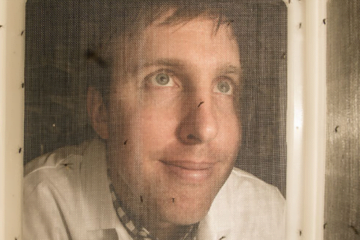Controlling malaria is a complicated affair. It involves combining different interventions, each with their own limitations, to try and break malaria’s cycle of transmission and reduce case incidence and mortality. Control programmes, therefore, typically involve bed net distribution, the spraying of insecticides and the use of diagnostics and treatment. Yet, there is another intervention that could also help to curb transmission.
Mass drug administration, or MDA, is a blanket public health intervention that distributes antimalarial drugs to everyone in a community irrespective of symptoms or infection. The key is to give out the drugs in the dry season when mosquitoes are less active and transmission is low. Doing so reduces the biomass of the malaria parasite in the human so that when the rainy season comes, the mosquito picks up fewer parasites thus reducing onward transmission. It can be used to reduce transmission in areas of low prevalence and in complex health emergencies that have the potential to overwhelm healthcare structures – sound familiar?
To explore further the issue of mass drug administration for malaria, a large-scale study was conducted in Zambia. It culminated in a series of articles just published in the American Journal of Tropical Medicine and Hygiene. The series was introduced by Dr Pedro Alonso, the WHO’s Malaria Director.
I’m joined now by John Miller, a Senior Malaria Technical Advisor at PATH, who was heavily involved in the study.
Could you briefly explain why Zambia was chosen as the location of the study?
Sure, this trial was funded by the Bill and Melinda Gates Foundation through our project at PATH called MACEPA which primarily works in three countries. Zambia has been the sort of flagship for MACEPA for about 15 years so it was a natural fit for doing this kind of work. We also built the study off of previous studies we had been working on for other types of community treatment delivery interventions so it was a bit of a flow of learning in Zambia that led us to the MDA trial.
Could you talk me through the situation in Zambia and why mass drug administration is being considered for the country?
Sure, most countries in Africa rely on the core interventions which the WHO recommends, including Zambia. This is primarily vector control – trying to reduce mosquito population densities, specifically those that are the most efficient transmitters of malaria that bite people indoors – so heavily relying on mosquito nets, insecticide-treated nets, and then indoor residual spraying, but also case management, mostly through facility-based service delivery of case management throughout Africa. I think Zambia has been following that and still obviously follows that guidance and has largely achieved pretty high levels of coverage of those core interventions. I think part of the reason why we wanted to look at other interventions is because of a sense that we’ve gotten what we can out of the core set of interventions, or we’ve gotten a lot of what we could have out of the core set of interventions, and wanted to see what else we could try that relied on the tools we have in hand.
The drug you used in this study was dihydroartemisinin-piperaquine (DHAP). Why was that particular drug used in terms of its therapeutic and prophylactic value that make it ideal for something like mass drug administration?
For MDA, you really want something that has as a good safety record, that’s well-tolerated, that’s very efficacious. The old MDA days use chloroquine when that’s what was available, but then obviously it got a lot of resistance. So in the current environment, using combination drugs is the recommended way to go. So we were using DHAP because it’s a combination therapy, it has a good safety record, it’s well-tolerated, it’s efficacious, and it has this therapeutic tail which you get from piperaquine which makes it a more ideal. Obviously, a longer tail – a longer period of prophylaxis – is even more preferred, but we don’t quite have that yet.
The other thing was, I think, influential in this in the context of other drugs available, too, is that that DHAP had recently been prequalified for manufacture that met one of these stringent regulatory authority approval, so it was a drug that was becoming available in a global sense of being able to be procured from funding agencies that regularly require these SRAs, the stringent regulatory authority. And, you know, those are regulatory bodies that really run the drugs through the mill and have a solid evidence base behind that drug. We obviously wanted to take advantage of all that work that had been done.
The other key thing is that we wanted a different drug than what the country was using for its first-line antimalarial treatment for uncomplicated malaria. So Zambia is using artemether/lumefantrine (AL), so we didn’t want to use the same drug for that. AL is not as ideal as DHAP mainly for the fact that it’s being used already, but also because lumefantrine is cleared a lot quicker, you don’t get is don’t really get a prophylactic period.
The study that you conducted across Zambia had 60 different health facilities. Could you describe the different conditions that you had in this study?
Yeah, so the trial was conducted in Southern Province so the 60 catchments were really confined to an area within one province, largely along Lake Kariba in Southern Province. The transmission patterns of Southern Province made it, I think, ideal for this study and that, of the 60 catchments, we really wanted to look at the effect of the MDA in lower and higher transmission areas, and Southern Province presented that nicely for us because the higher burden areas are somewhat confined, and then there’s adjacent lower transmission areas which we also included in the 60. So the 60 were split between 30 higher burden and 30 lower burden. Within those, we had three study arms. One was a control arm, then we had an arm that looked at a focal mass drug administration (fMDA) arm, and then we had a community-wide mass drug administration arm. The focal drug administration arm was just providing treatments to houses where anyone tested positive with a rapid diagnostic test (RDT). If anyone in the house tested positive, then everyone in that house who was eligible got the DHAP. So it was focal around the household level where infection was identified. And then the community-wide is basically where everybody in the area who’s eligible gets it, so it’s true mass drug administration. And, as part of the trial, we did a baseline survey, some baseline information on the various health facility catchment areas. We also, as a part of the randomisation process, we balanced on what we think will be confounders for the study outcomes, specifically like vector control; we know vector control reduces malaria burden so we looked at that when we were doing the randomisation of the health facility catchments into the arms.
In terms of where focal mass drug administration or community mass drug administration was used, what kind of health outcomes did you observe?
So we had three primary outcomes for the study and we looked at those three outcomes in each of the arms, and that served as the basis of our comparison between the intervention arms and the control arm. So the three outcomes we looked at were prevalence, the infection prevalence which we measured through cross-sectional surveys. We looked at the incidence of infection through a cohort that we monitored across the duration of the trial. And then our third outcome was it was routinely reported clinical incidence, so people that were presenting to a healthcare service provider with malaria symptoms, a fever, and a positive test, so looking at it in the context of a reported clinical incidence coming from those service providers. Those were the three primary outcomes that we looked at.
And what did you conclude?
Malaria, in general, reduced across the entire study area in all three arms over the course of the trial. But, in addition to that, MDA reduced the malaria burden further in particular in the lower burden areas with respect to two of the three outcomes, the outcome of prevalence and clinical incidence. In the higher burden areas, we saw a reduction with the MDA in relation to the incidence of infection through the cohort, which was a statistically significant difference. A couple of key things that we summarised nicely in the last paper that looked across all of the articles that were a part of the supplement: this scaled intervention package, SIP, contributed to large declines in malaria across all arms, which is why we saw the burden decline, even in the control arm. We didn’t see the importation of infections, at least as we measured it, to be a really a driving force for the transmission. As I said, we have had resistance to pyrethroids and we saw the effect regardless in the context of that resistance, and we know that the parasites are susceptible to the ACTs we used. When we compare the MDA to the focal MDA, the MDA had consistently higher or better results than the focal MDA. It was, in that respect, sort of a dose-response; the more treatments that were provided, the bigger effect that we saw compared to the control arm, the scaled intervention arm. We think the drugs were delivered, the interventions were delivered as we had expected them to be.
A key policy of the WHO’s new strategy, High Burden to High Impact, is to look beyond these one-size-fits-all approaches and tailor different drugs and interventions to different localities on their individual profile. Now, how would you see mass drug administration fitting into that? What kinds of scenarios do you think would be suitable for mass drug administration?
That’s a good question. The ‘High Burden to High Impact’ is an excellent effort to refocus attention and resources to where the majority of the world’s malaria burden exists. Stratification and targeting of really all interventions is important. We tried to make it very clear in this trial, and in the write-up, that prior to using MDA in any context in the African setting, substantial efforts are needed to ensure that this sort of scaled intervention package or, you know, the basic core package of malaria control tools that are recommended needs to be in place. We went to great lengths to emphasise this. To summarise the findings, I would say we consider MDA to be more of an accelerant to malaria progress. Once the priority has been put on this scaled intervention package, once these priority core interventions are in place, then you can consider accelerating your progress with MDA. And a lot of that becomes more around cost decisions. But certainly for the targeting issue, as areas progress in reducing their malaria burden, it’s always important to re-examine the level of investments that you’re making for any intervention, with an eye to sustain those gains, but to gain some efficiencies, because money is always limited in the fight against malaria. You’re always going to have to prioritise. But, to sustain the gains and figure out ways to gain efficiencies, to continue to make progress.
And on the subject of cost-effectiveness, how cost-effective is mass drug administration?
One of the articles we have in the supplement goes into great detail about the cost-effectiveness that we measured. According to WHO thresholds for cost-effectiveness. It was a cost-effective intervention. The mass drug administration is slightly better, slightly more cost-effective than doing the focal drug administration. And we found that to be the case, as well, MDA to be slightly more cost-effective in higher transmission settings than in the lower transmission settings. Mostly, that’s the denominator issue of having more malaria that you’re affecting. As I said, we view MDA as an accelerant, so once these other things are in place, you know, it can be considered. But again, obviously, prioritise making sure that this core package is done well and coverage is high prior to kind of launching into an MDA effort.
We briefly touched on this before, the malaria parasite is awfully good at adapting, or resisting, the drugs that we use to fight it. There’s widespread resistance to chloroquine and growing resistance to artemisinin and to the insecticides – as we pointed out – to the pyrethroids used in bed nets. Does the ubiquitous use of antimalarial drugs, like DHAP, for mass drug administration not increase this risk of resistance and potentially reduce the drug’s longevity, given that there are few drugs as it is?
Well, resistance is in some ways inevitable. We’re always on a clock for the drugs or chemicals that we’re using, whether it be for killing mosquitoes or parasites with treatments. For MDA, or for treatments in general, we rely on these combination drugs, we think those help mitigate a lot of the sort of expected onset of resistance, help to delay that process. We used a combination drug for the MDA efforts and we used a different one than we used for case management in Zambia context. We also monitored drug resistance regularly, and we’ve not seen any change in the therapeutic efficacy from the standard of which there was therapeutic efficacy studies that have been done in Zambia and in the areas where we’ve done the MDA trial. It is important to think about MDA as a time-limited effort which could also help mitigate the onset of resistance and the timeline. So, using it for a certain part of time, and not continually trying to do MDA in the same areas, or if you if you’re not seeing that it’s having that effect. There’s a lot of intelligence you need to build into your program with regard to monitoring resistance. I think Zambia is doing a good job with that, and we’ve not seen any of that so far with the MDA that’s happened in Zambia.
One of the use cases for mass drug administration is in the context of a public health crisis. Indeed, it was used in the Ebola outbreak, for example. What are your recommendations for the use of MDA in the context of the coronavirus pandemic? And is it still safe to distribute the drugs when there’s a different mode of transmission, when the virus – coronavirus – can be transmitted through the air and not just through touch?
Well, I think with most malaria interventions, we would hope that we don’t see a delay or a reason to postpone them in the face of other big health challenges. Certainly, as you mentioned, in the Ebola outbreak, MDA was used to help clear out malaria so that Ebola might be better able to be identified. In the context of Zambia, we haven’t been using MDA since COVID started, it’s just I think the COVID pandemic has been just recent and MDA hasn’t been either available or used in the context of the COVID-19 pandemic. But, I think I would put it in the same category as most malaria interventions. We would need to take precautions for how interventions are delivered as much as possible through social distancing and paying attention to how COVID is spread, minimising contact. But, at the same time, still delivering the key malaria services. MDA is a treatment and you can provide treatments in ways that don’t rely on having contact with an individual. If you’re testing them, it’s a different story but testing is a key part of health service delivery and done by health professionals. I’m not sure that’s the best answer for that question, but we don’t want to see the core malaria services being interrupted in any situation because malaria is such of a serious illness when you have it, especially for young kids, you don’t want to they don’t want to delay or to have other things affect it in a way that causes your malaria situation to get worse.
The study presents very clearly that mass drug administration is effective, as you say, against those three parameters: prevalence, incidence and reported incidence at service providers. Now, given what you’ve found – and you’ve presented this to the WHO – how do you hope, or do you hope, that their guidelines on mass drug administration will change?
As a study team, we presented the results of this trial – some early results of this trial – to the evidence review panel in 2018 on the main outcomes. We certainly hope that the publication of the full range of the articles and the supplement provides some additional information to consider about where MDA adds value and the overall toolbox for malaria control and elimination. WHO recommends other treatment-based mass treatment based strategies, like seasonal malaria chemoprophylaxis (SMC), which is targeting slightly different outcomes in reducing disease and deaths in children. MDA is an extended form of that and to a large degree. I think we’re still learning how to appropriately apply these treatment-based interventions, especially in the African context. Certainly, I agree with the WHO’s recommendations for MDA and the way they’re defined that I think a lot of what we’ve shown in this trial, especially for lower burden areas, is that it can play a role given other core interventions are in place. That might be a bit of the nuance in the African setting that we’ve added to the overall argument. WHO recommends that for low burden areas, probably lower burden than what we’ve suggested, but hopefully expanding that range a little bit and also stressing the need for the presence of the other core interventions to be there, to be done well before MDA is added to the toolbox.
John Miller, thanks very much.
Thank you.
Image Credit: Gabe Bienczycki, PATH


